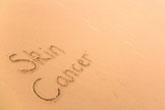|
PT Classroom - The Role of the Physical Therapist with Skin Cancer Screening ׀ by Denny Patel, DPT, CSCS |

Denny A. Patel, DPT, CSCS. Dr. Patel graduated from Loma Linda Univeristy with a Masters in 1999 and recently received his Doctorate from Western Univeristy of Health Sciences. He is currently Owner of Santa Ana Tustin Physical Therapy, Inc in Orange County, California. Dr. Patel has been practicing physical therapy for over 10 years now and is also a certified strength and conditioning specialist. He has advised many professional athletes by performing musculosketal evaluations and presenting proper training programs to their personal trainers. He is also a certified clinical instructor by the APTA and takes students/interns on a regular basis. Dr. Patel is also a Part-time instructor for Human Anatomy and Biology at Santa Ana College. |
|
The Role of the Physical Therapist with Skin Cancer Screening
As physical therapists transition to direct access across
the United States, we have quickly become the first line of
defense for many medical conditions. One condition that is
readily seen in practice is skin cancer. Since physical
therapists regularly require their patients to expose large
parts of their body, we can easily detect cancerous lesions
and hopefully reduce the morbidity and mortality associated
with the most common malignancy occurring in humans.
Last revised: October 13, 2009
REFERENCES |
|
|
|
|








